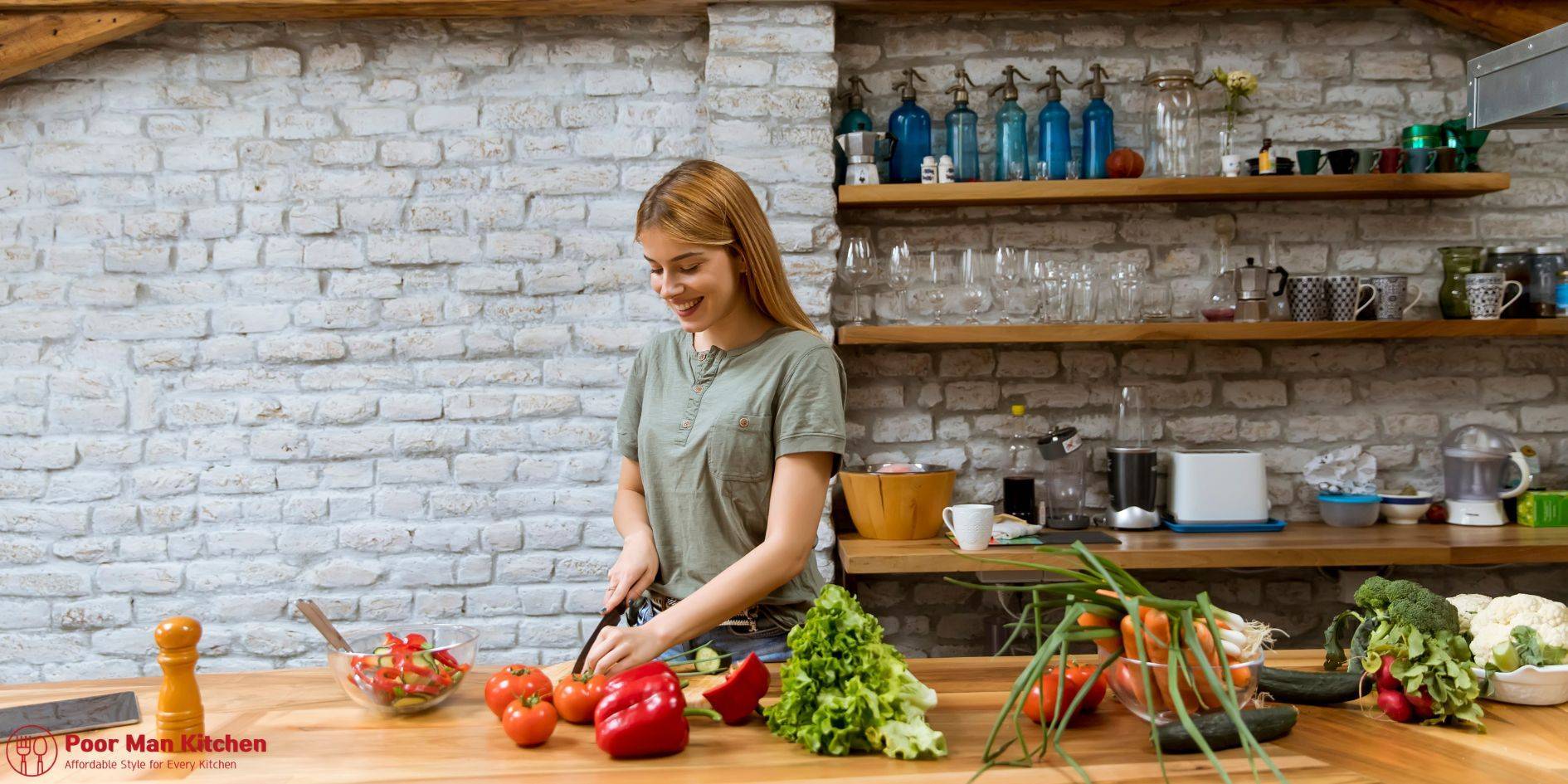Intro to Butcher Block Kitchen Islands
Butcher block kitchen islands there’s something magical about the way butcher block brings a space to life. If your dream kitchen area includes cosy textures, classic character, and a hint of rustic beauty, then a butcher block island is your ideal match. Butcher block isn’t simply a product; it’s a statement. Whether you’re undertaking a complete kitchen remodel or desire to revitalize your island, adding butcher block can make your kitchen feel warmer, more inviting, and grounded in natural beauty.
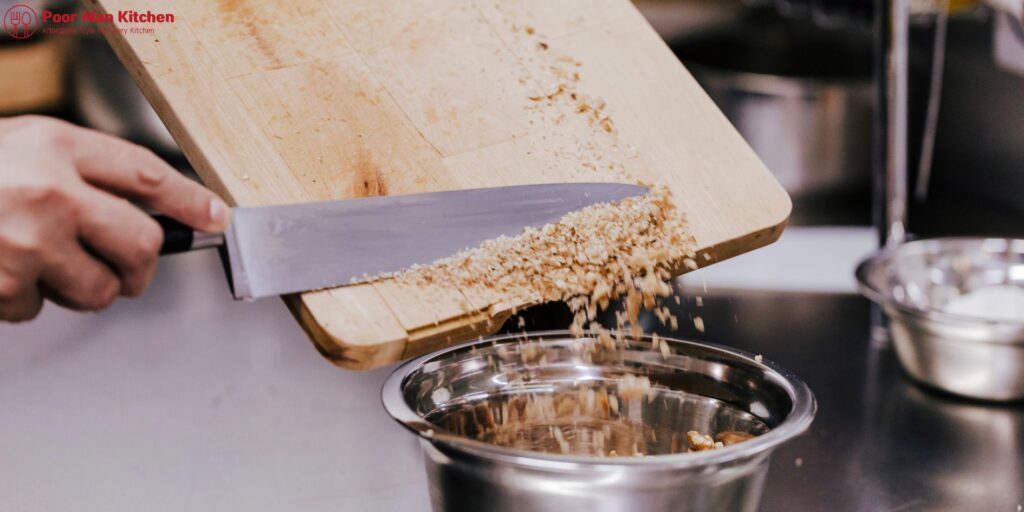
Exactly what Is a Butcher Block?
A butcher block is a wooden surface area produced by fusing strips of wood — typically maple, walnut, oak, or cherry — into thick pieces. The outcome is a firm, durable surface initially utilised for heavy chopping in butcher shops. Today, it’s a preferred option for countertops and islands thanks to its earthy tone and durability.
There are two primary types:
- Edge grain: Long wood strips glued together edge-to-edge. This is the most common and budget-friendly alternative.
- End grain: Small wood pieces glued vertically to form a checkerboard pattern. It’s spectacular, resilient, and more expensive.
Why Butcher Block Islands Are Trending
From HGTV kitchens to cosy country homes, butcher block islands are trending– and for good reason. Let’s break down why designers and property owners are liking them.
Timeless Aesthetic Appeal
Wood is abundant and naturally warm in texture. Butcher block fits wonderfully into almost any cooking area style —from rural to modern, farmhouse, commercial, or Scandinavian.
Functionality for Every Cook
Slice straight on the surface, present the dough, serve food, or sip coffee — butcher block is among the most versatile countertops. Some even function as both prep locations and breakfast bars.
Eco-Friendly Options
Love sustainability? Reclaimed wood or FSC-certified butcher block alternatives are excellent options for eco-conscious homeowners. Plus, it’s eco-friendly and does not require mining or substantial processing like stone.
10 Stunning Butcher Block Kitchen Island Ideas
Now, let’s explore 10 style ideas that go beyond essentials and give your kitchen a special, comfortable vibe.
1. Traditional Farmhouse Island with Butcher Block Top
Channel that vintage nation charm with a farmhouse-inspired butcher block island. Start with distressed white cabinetry and complement it with a thick, warm wood surface, such as maple or hickory.
Tips:
- Add beadboard panels or X-frame accents.
- Choose matte black or brushed bronze hardware.
- Display cookbooks, mason containers, or a classic bread box.
2. Industrial-Style Butcher Block Island with Metal Frame
Want something city and strong? This industrial fusion is ideal for loft-style homes or bachelor pads.
Tips:
- Use recovered wood for additional edge.
- Add exposed bulb pendant lights.
- Keep devices to a very minimum to preserve the raw aesthetic.
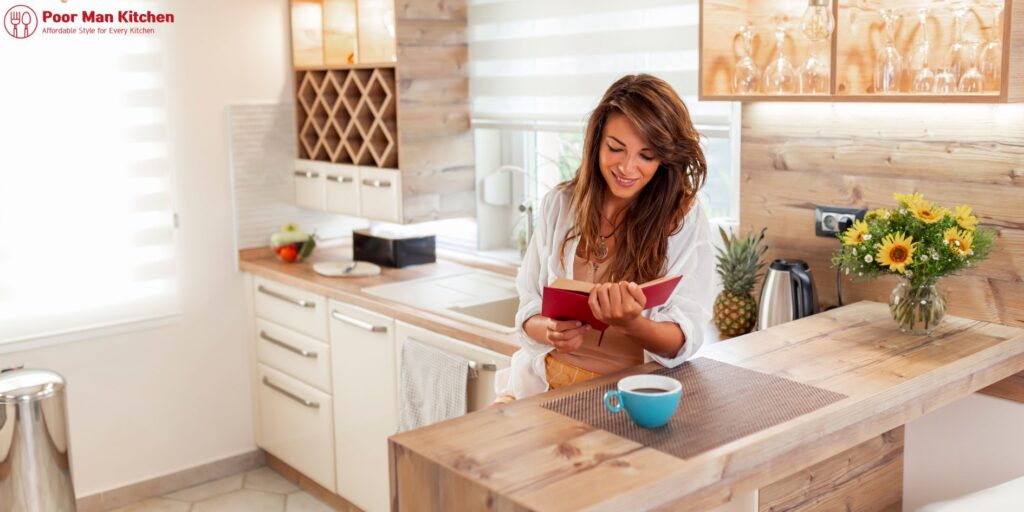
3. Butcher Block Waterfall Edge for a Modern Touch
A waterfall edge– where the butcher block continues down the sides– gives a smooth, contemporary appearance. It’s minimalist, dramatic, and showcases the wood grain wonderfully.
Tips:
- Match it with handleless cabinets.
- Pair with concrete or matte black surfaces.
4. Vintage Island with Reclaimed Wood Butcher Block
Nothing screams rustic like a butcher block top made from restored barn wood or old flooring. Each scratch, knot, and dent adds character.
Tips:
- Match with shaker-style cabinets.
- Use antique hardware or iron brackets.
- Seal with food-safe oil to protect the finish.
5. Crisp White Cabinets with Rich Wood Tops
Bright white cabinets and a golden-toned butcher block? Excellence. This combination feels airy, fresh, and welcoming– perfect for Family homes.
Tips:
- Finish with polished nickel or gold hardware.
6. Movable Butcher Block Island Cart
Tight on space? A butcher block island on wheels is a functional, compact, and versatile option.
Tips:
- Look for one with locking caster wheels.
- Include towel bars or spice racks on the sides.
- Paint the base in an enjoyable pop colour like navy or sage.
7. Integrated Seating Island with Extended Butcher Block
Why not make your island a casual dining zone? Extend the butcher block top past the base and embed bar stools. Perfect for quick breakfasts or relaxing evenings with a glass of red wine.
Tips:
- Use a waterfall or rounded edge for security.
- Add pendant lights above for atmosphere.
- Choose stools with natural textures like leather or a walking cane.
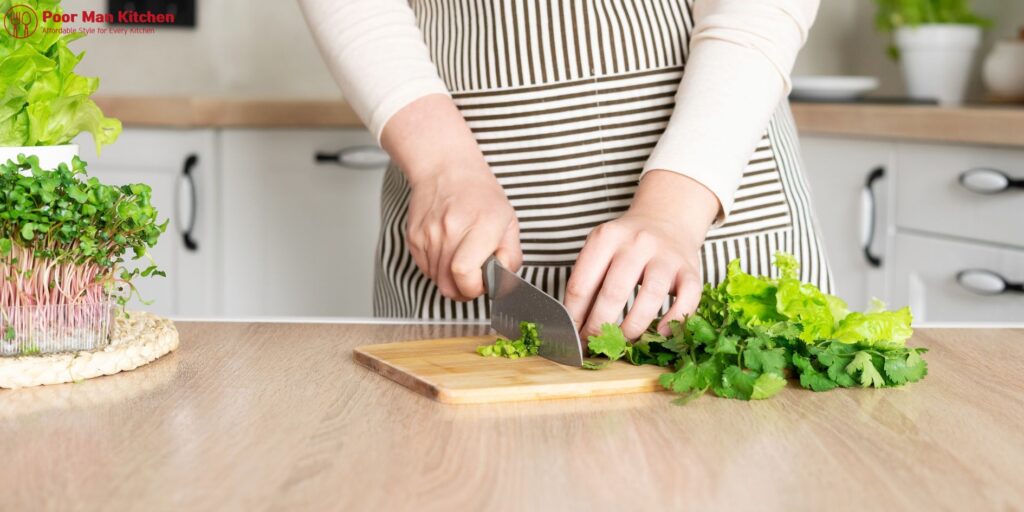
8. Black Base with Warm Wood Countertop
Go moody and intense by pairing a jet-black base with a medium-toned butcher block. This combo screams sophistication with a rustic twist.
Tips:
- Pair with open wooden shelves for cohesion.
- Add matte black faucet and hardware.
- Consider a live-edge wood top for added character.
9. Narrow Butcher Block Island for Small Kitchens
Do not let the restricted area stop you. A slim, galley-style butcher block island features a prep room and an appealing design without crowding the space.
Tips:
- Include a narrow drawer or open shelf listed below.
- Add hooks on the sides for towels or utensils.
- Match the wood tone to other accents in your space.
10. Large L-Shaped Butcher Block Island
Got a big kitchen? Go huge with an L-shaped island. It provides ample counter space and creates zones for cooking, dining, and working.
Tips:
- Use butcher block on one wing and quartz on the other for contrast.
- Incorporate a sink or cooktop on one side.
- Include integrated racks or drawers for storage.
Selecting the Right Butcher Block Design for Your Kitchen
It’s not just about what looks good —it’s about what works best for you. Here’s how to make the ideal call.
Match Your Style
- Modern → Sleek edges, dark wood tones, minimal hardware.
- Rustic → Reclaimed wood, open shelving, hand-scraped finishes.
- Transitional → Neutral cabinets, subtle grain patterns, brushed metal accents.
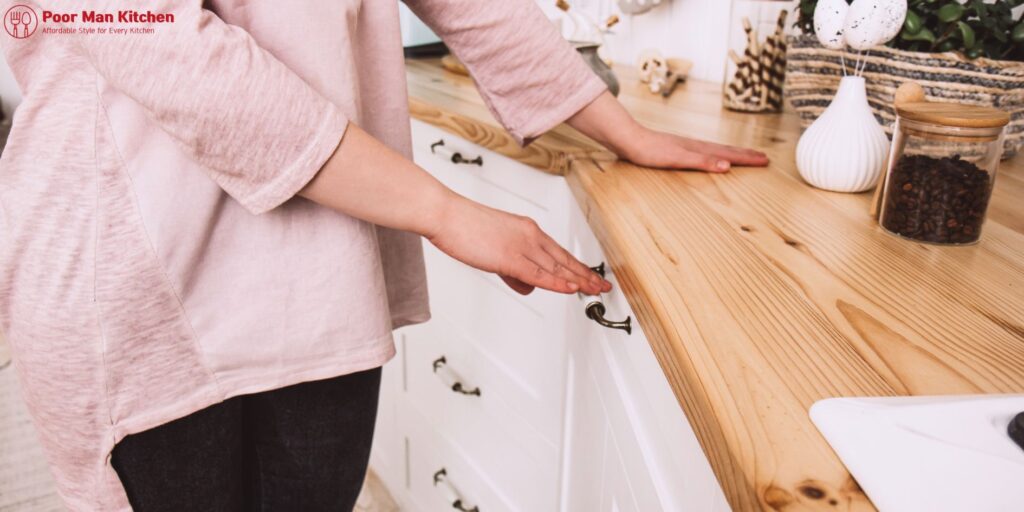
Think of How You Cook & Live
- Heavy on food preparation? Select end-grain for durability.
- Love amusing? Include seating and storage.
- Tight on space? Opt for a cart or slimline style.
Colour Coordination Tips
- Match the butcher block to your flooring for a cohesive circulation.
- Contrast with cabinets for a bold look.
- Complement wood tones in beams, stools, or racks.
Butcher Block Maintenance Tips
Daily Cleaning
- Avoid letting water rest on the surface.
- No severe chemicals– they strip the surface.
Month-to-month Conditioning
- Apply food-grade mineral oil or butcher block conditioner month-to-month.
- Use a tidy cloth and let it soak overnight.
- This keeps the wood hydrated and resistant to cracking.
Discolouration & Scratch Repair
- Light scratches? Sand gently and re-oil.
- Stains? Try lemon juice or baking soda paste.
- Deep damage? Sand and refinish the whole surface.
Sealing vs. Natural Finish
- Sealed wood (with polyurethane) is not food-safe, but it’s tidy for chopping.
- Oiled wood requires more upkeep but is ideal for food prep.
Bonus Offer Tips to Elevate Your Butcher Block Island
- Add under-cabinet lighting for ambience.
- Incorporate hidden power outlets for benefit.
- Include deep drawers or pull-out bins for better storage.
- Use butcher block as a style aspect– match it on open shelves or backsplashes.
Conclusion
A butcher block kitchen island isn’t simply an addition to your kitchen– it’s a design statement, a discussion starter, and a functional workhorse all in one. Whether you’re going for rustic charm, contemporary minimalism, or classic farmhouse cosiness, there’s a butcher block concept that perfectly suits your space.
With proper care and the right style, your butcher block island can serve as the heart of your kitchen for years to come— warm, welcoming, and bursting with character.
FAQs.
1. Can I prep food directly on my butcher block island?
Yes, if it’s finished with a food-safe oil. You should consider utilising a cutting board to prevent deep scratches.
2. Will my butcher block island modification colour over time?
Yes — it’ll develop a natural patina, especially if oiled regularly. That’s part of the charm!
3. How much does a butcher block island cost?
It varies widely —little DIY projects start around $200, while custom, large slabs can cost thousands.
4. Can I blend butcher block with other countertop products?
Definitely! It looks fantastic when paired with quartz, granite, or stainless steel for a multi-textured design.
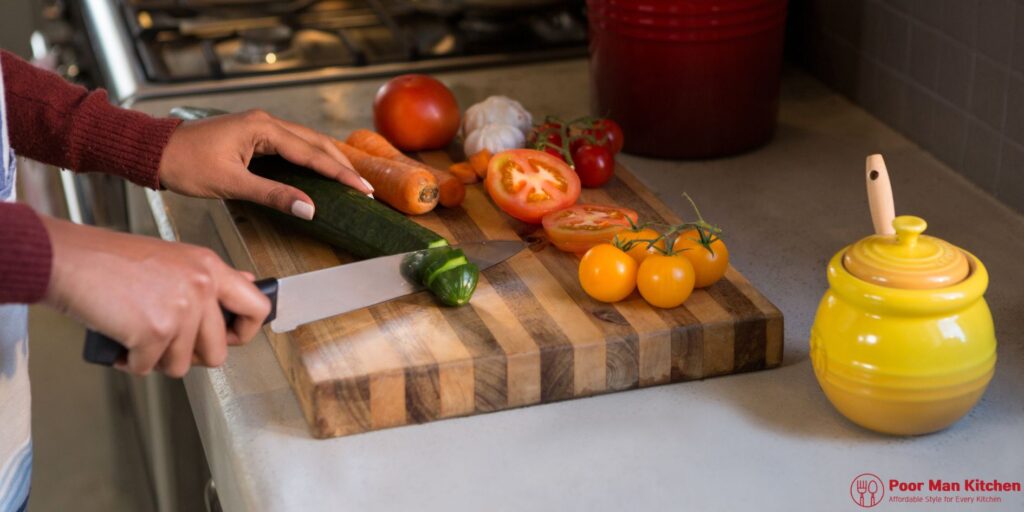
A butcher block is a wooden surface created by combining strips of hardwood — typically maple, walnut, cherry, or oak — into thick pieces. Butcher block fits beautifully into nearly any kitchen style —from rural to modern, farmhouse, industrial, or Scandinavian. Recovered wood or FSC-certified butcher block choices are excellent for eco-conscious property owners. Pair a butcher block top with a black iron or steel frame base. A butcher block island on wheels is a functional, compact, and flexible option.
<script type="application/ld+json">
{
"@context": "https://schema.org",
"@type": "BlogPosting",
"mainEntityOfPage": {
"@type": "WebPage",
"@id": "https://poormankitchen.com/butcher-block-kitchen-islands/"
},
"headline": "Amazing Butcher Block Kitchen Islands You’ll Love in 2025",
"description": "Butcher block kitchen islands there’s something magical about the way butcher block brings a space to life. If your dream kitchen area includes cosy textures, classic character, and a hint of rustic beauty, then a butcher block island is your ideal match.",
"image": "https://poormankitchen.com/wp-content/uploads/2025/07/butcher-block-kitchen-islands-1.jpg",
"author": {
"@type": "Person",
"name": "poormankitchen",
"url": "https://poormankitchen.com/butcher-block-kitchen-islands/"
},
"publisher": {
"@type": "Organization",
"name": "Humayon",
"logo": {
"@type": "ImageObject",
"url": "https://poormankitchen.com/wp-content/uploads/2025/07/cropped-Nest-1.png"
}
},
"datePublished": "2025-08-03",
"dateModified": "2025-08-03"
}
</script>
